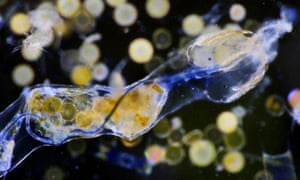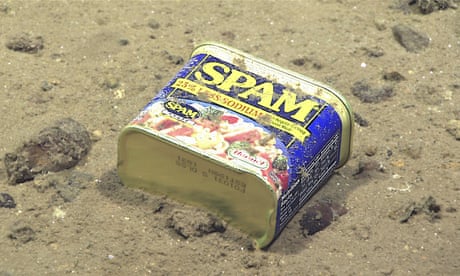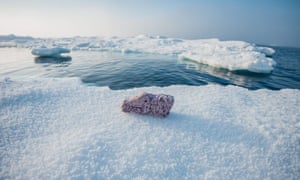‘Very worrying finding’ from nearly 11km deep confirms fears that synthetic fibres have contaminated the most remote places on Earth
By Matthew Taylor

Animals from the deepest places on Earth have been found with plastic in their stomachs, confirming fears that manmade fibres have contaminated the most remote places on the planet.
The study, led by academics at Newcastle University, found animals from trenches across the Pacific Ocean were contaminated with fibres that probably originated from plastic bottles, packaging and synthetic clothes.
Dr Alan Jamieson, who led the study, said the findings were startling
and proved that nowhere on the planet was free from plastics pollution.

“There is now no doubt that plastics pollution is so pervasive that nowhere – no matter how remote – is immune,†he said.
Evidence of the scale of plastic pollution has been growing in recent months. Earlier this year scientists found plastic in 83% of global tapwater samples, while other studies have found plastic in rock salt and fish.
Humans have produced an estimated 8.3bn tonnes of plastic since the 1950s and scientists said it risked near permanent contamination of the planet.
Jamieson said underlined the need for swift and meaningful action.
“These observations are the deepest possible record of microplastic
occurrence and ingestion, indicating it is highly likely there are no
marine ecosystems left that are not impacted by anthropogenic debris.â€
He said it was “a very worrying find.â€
“Isolating plastic fibres from inside animals from nearly 11 kilometres deep (seven miles) just shows the extent of the problem. Also, the number of areas we found this in, and the thousands of kilometre distances involved shows it is not just an isolated case, this is global.â€
The study tested samples of crustaceans found in the ultra-deep trenches that span the entire Pacific Ocean – the Mariana, Japan, Izu-Bonin, Peru-Chile, New Hebrides and Kermadec trenches.
These range from seven to more than 10 kilometres deep, including the
deepest point in the ocean, Challenger Deep in the Mariana Trench.
The team examined 90 individual animals and found ingestion of plastic ranged from 50% in the New Hebrides Trench to 100% at the bottom of the Mariana Trench.
The fragments identified include semi-synthetic cellulosic fibres, such as Rayon, Lyocell and Ramie, which are all microfibres used in products such as textiles, to plastic fibres that are likely to come from plastic bottles, fishing equipment or everyday packaging.
Jamieson said deep-sea organisms are dependent on food “raining down from the surface which in turn brings any adverse components, such as plastic and pollutants with it.â€
“The deep sea is not only the ultimate sink for any material that descends from the surface, but it is also inhabited by organisms well adapted to a low food environment and these will often eat just about anything.â€

An estimated 300m tonnes of plastic now litters the oceans, with more than 5 trillion plastic pieces – weighing more than 250,000 tonnes – currently floating on the surface. Around 8m tonnes of plastic enters our oceans every year.
Jamieson said: “Litter discarded into the oceans will ultimately end up washed back ashore or sinking to the deep-sea, there are no other options.
“Once these plastics reach the deep-seafloor there is simply nowhere else for them to go, therefore it is assumed they will simply accumulate in greater quantities.â€
Matthew Taylor is an environment correspondent for the Guardian.
This article appeared a year ago in The Guardian. The information is still valid and timely.
